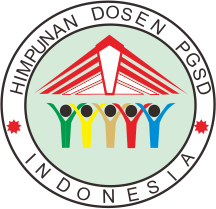PEMANFAATAN MEDIA PEMBELAJARAN BERBASIS LINGKUNGAN SEBAGAI SARANA PRAKTIKUM IPA UNTUK MENINGKATKAN PEMAHAMAN KONSEP SISWA DI SMP-IT AR RAHMAH PACITAN
DOI:
https://doi.org/10.30595/dinamika.v7i2.936Keywords:
science, learning results, student understanding, learning method based on environmentAbstract
This research is motivated by lack of understanding of the concept of eighth grade in Ar Rahmah Pacitan Islamic Integrated Junior High School on science subject. Many learning methods found to improve students performance, but how does the teacher is able to choose the appropriate learning method to gain optimal learning results. The purpose of this research is to increase student’s understanding of concepts. For contextual learning or just rely on the books, sometimes the students feel bored, so the student's understanding in learning is less and need a help tool. This research uses a classroom action research method, which lasts for two cycles. The chronology of this research, starting from planning, action, observation, and reflection. The subjects are 30 students. Collecting data using tests, practicum, questionnaire, interviews, observation, and documentation. The datas are analyzed by looking at the classical mastery learning students ie 75% of students got a score ≥ 75. The results of this research showed that the media environment based learning can increase student’s understanding of the concept. This is evident from the enhancement in the average results of the first cycle test is 77.8 and the second test is 84.5. The learning model that based on environment succeed in increasing understanding of science concepts with the percentage of completeness initially increased by 48% to 70% in cycle 1 and 93% in cycle 2.References
Azhar Arsyad. (2002). Media pembelajaran.Jakarta: PT Raja Grafindo Persada.
Badan Standar National Pendidikan. (2007). Standar proses untuk satuan pendidikan dasar dan menengah. Jakarta: Badan Standar National Pendidikan.
Carin, A.A. & Sund, R.B. (1985).Teaching science through discovery.USA: Merrill Publishing.
Chapman, N. & Chapman, J. (2004). Digital multimedia second edition. England: John Wiley & Sons.
Chomsin S. Widodo & Jasmadi.(2008). Panduan menyusun bahan ajar berbasis kompetensi. Jakarta: Elex Media Komputindo.
Collete, A.T. & Chiappetta, E.L. (1994). Science instruction in the middle and secondary schools third edition.New York: Macmillan.
Gagne, R.M. (1977). The condition of learning third edition. USA: Holt, Rinehart and Winston.
Hamzah B. Uno. (2007). Profesi kependidikan problema, solusi, dan reformasi pendidikan di Indonesia. Jakarta: Bumi Aksara.
McGraw-Hill. (2007). Integrated science third edition. New York: McGraw-Hill Companies.
Nana Sudjana & Ahmad Rivai. (2001). Media pengajaran. Bandung: Sinar Baru Algensindo
Paul Suparno. (1997). Filsafat konstruktivisme dalam pendidikan. Yogyakarta: Kanisius.
Sumaji, dkk. (1998). Pendidikan sains yang humanistis. Yogyakarta: Kanisius.
Suparlan. (2008). Menjadi guru efektif. Yogyakarta: Hikayat.
Zainal Aqib & Elham Rohmanto. (2007). Membangun profesionalisme guru dan pengawas sekolah. Bandung: Yrama Widya
Downloads
How to Cite
Issue
Section
License
Authors who publish with this journal agree to the following terms:
Authors retain copyright and grant the journal right of first publication with the work simultaneously licensed under a Creative Commons Attribution License that allows others to share the work with an acknowledgement of the work's authorship and initial publication in this journal.
Authors are able to enter into separate, additional contractual arrangements for the non-exclusive distribution of the journal's published version of the work (e.g., post it to an institutional repository or publish it in a book), with an acknowledgement of its initial publication in this journal.
Authors are permitted and encouraged to post their work online (e.g., in institutional repositories or on their website) prior to and during the submission process, as it can lead to productive exchanges, as well as earlier and greater citation of published work (See The Effect of Open Access).

Dinamika Jurnal Ilmiah Pendidikan Dasar is licensed under a Creative Commons Attribution 4.0 International License.













